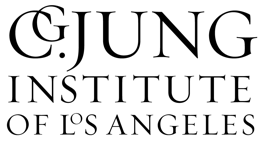
In Person + Zoom: Flying Saucers: A Modern Myth of Things Seen in the Skies
In-Person Only: Embodied Resourcing Through Image Making
POSTPONED: First North American Conference on Infant, Child and Adolescent Jungian Analysis
In Person + Zoom: Flying Saucers: A Modern Myth of Things Seen in the Skies
In-Person Only: Embodied Resourcing Through Image Making
POSTPONED: First North American Conference on Infant, Child and Adolescent Jungian Analysis
« All Events « All Public Programs « All Training Programs
In Person + Zoom: Flying Saucers: A Modern Myth of Things Seen in the Skies
January 25 @ 1:00 pm - 4:00 pm
Prepaid Cost: $90.00 – $110.00Event Navigation

Presenting Panel:
Michael Gellert, L.C.S.W: The Continuum of UFO Experiences: A Typology
Marybeth Carter, Ph.D. On Flying Saucers: Visions and Their Psychological Function with Anson Levine, Ph.D, Discussant
Katharine Bainbridge, M.F.T., S.E.P.: UFOs in a Psychological and Non-Psychological Light
Christophe Le Mouël, Ph.D.: Signs in the Sky in Jung’s Red Book and Dreams
“Something is seen, but it isn’t known what’. This information leaves the question of ‘seeing’ open. Something material could be seen, or something psychic could be seen. Both are realities, but of different kinds.” (C. G. Jung, 1958, in CW 18, para 1445)
In Jung’s view, the “Saucer epidemic,” particularly the numerous reports occurring in the United States, brought forth many issues of relevance to analytical psychology. In his essay, Flying Saucers, Jung focused on these issues through his “thematic idea of the individual self [who is] struggling to achieve wholeness, and producing, when frustrated in its struggle, neurotic projections of various kinds”. Jung proposed the concepts of visions versus hallucinations and of ‘borderline’ realities, the fiction of ‘normality’, and discussed the spiritual hunger that erupts from our “extremely scientific, technological culture.” If this was Jung’s view in 1958, what is emerging in our current time? The panel presentations will explore past and recent reports released by the U.S. government about unidentified anomalous phenomena. Together we will reflect on Jung’s essay, its applicability to clinical work, and the experiences of people striving for wholeness in today’s society-at-large.
The text for the workshop is Jung’s essay “Flying Saucers,” first published in 1958. It is available as a published book, or in CW10, V. paras. 589-824, pp. 309-433. It is recommended but not required reading to attend.
Learning Objectives:
- Differentiate visions from hallucinations as understood by analytical psychology;
- Describe what is meant by one-sided thinking and how it affects the individual and society;
- Describe what is meant by a borderline reality and its clinical significance;
- Describe what is meant by emotional and spiritual hunger and its clinical significance
Michael Gellert, M.A., L.C.S.W. is a Jungian analyst practicing in Los Angeles and Pasadena, California and former Director of Training of the C. G. Jung Institute of Los Angeles. He is the author of Modern Mysticism, The Way of the Small, The Divine Mind, and America’s Identity Crisis, the latter two of which each won a Nautilus Book Award. His website is www.michaelgellert.com.
Marybeth Carter, Ph.D., is a Jungian analyst with a degree in religious studies with honors from Indiana University and in clinical psychology from Pacifica Graduate Institute where she is now an adjunct faculty. She is chair of the International Association for Jungian Studies (IAJS) and also serves on the board of the C. G. Jung Institute of Los Angeles. Marybeth’s interests are in the creative arts, transcendent states, and the process of individuation. Some of her published work includes “Crystalizing the Universe in Geometrical Figures: Diagrammatic Abstraction in the Creative Works of Hilma af Klint and C. G. Jung,” “Satan’s Mouth or Font of Magic What Is It about the Anus?” and “Painting an Especially Bright Spirit: A Jungian Lens on the Art of Agnes Pelton” all published in Jung Journal: Culture & Psyche. Her book The Spectre of the Other in Jungian Psychoanalysis, co-edited with Stephen Farah, is published by Routledge. Correspondence: Marybeth.Carter@msn.com.
Katharine Bainbridge, M.F.T., S.E.P., is a Jungian analyst and Somatic Experiencing Practitioner in private practice in Encino. Her unique holistic psychotherapy practice is partly informed by her 30 years as a Tibetan Buddhist practicer. Katharine writes, lectures, and holds workshops nationally on trauma, grief, and the collective wounds of the feminine.
Christophe Le Mouël, Ph.D., was trained as a quantum physicist and did theoretical research in high energy physics for several years in France and Greece. Fascinated by the connection of physics and psychology, he lectured internationally on this topic. He is currently the executive director of the C.G. Jung Institute of Los Angeles and co-chief editor of the Jungian journal Psychological Perspectives. He is also a candidate-in-training at the Research and Training Centre for Depth Psychology according to C.G. Jung and Marie-Louise von Franz in Zürich.
Refund requests must be sent by email at administration@junginla.org before noon (12:00 pm) prior to the program being paid for. No refund will be issued otherwise.
Continuing Education:
Psychologists/LCSWs/MFTs/LPCCs: The C.G. Jung Institute of Los Angeles is approved by the American Psychological Association to sponsor continuing education for psychologists. The C.G. Jung Institute of Los Angeles maintains responsibility for this program and its content.
Nurses: The C.G. Jung Institute of Los Angeles is an accredited provider approved by the California Board of Registered Nursing. Registered Nurses may claim only the actual number of hours spent in the educational activity for credit.
